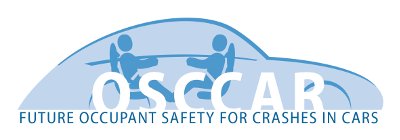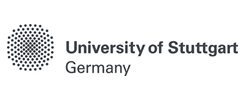Partners

The VIRTUAL VEHICLE Research Centre is an independent, international research and development centre which deals with application-oriented vehicle development and future vehicle concepts for road and rail. Currently, about 200 experts are employed at the location in Graz/Austria.
VIRTUAL VEHICLE addresses “smart mobility” and, in particular, the vehicles of tomorrow, which shall be safe, environmentally-friendly and affordable. Hence, cutting-edge research and technology development is essential, and simulation is a key opening completely new possibilities. VIRTUAL VEHICLE provides a close linkage of numerical simulation and experimental validation, and offers comprehensive system simulation up to the complete vehicle. Its project landscape ranges from thorough investigation of individual technologies up to combining various individual aspects to create a comprehensive vehicle perspective.
VIRTUAL VEHICLE is currently working in close collaboration with over 80 industrial partners and, in addition to our principle scientific partner, Graz University of Technology, more than 40 international university research institutes.
The department “Integrated Vehicle Development” has many years of experience in developing passive and active safety simulation methods for, amongst others, ATDs, HBMs, VRUs, restraint systems, full vehicle structures and component testing, test bench development and integrated simulation and effectiveness assessment.

Autoliv is the largest supplier of occupant restraint systems for the automotive industry with more than 70 000 employees in 27 countries. Autoliv range of products covers seatbelt systems, airbag systems, inflatable curtains, side bags, anti-whiplash systems, pedestrian protection airbags etc. We estimate that Autoliv products save more than 30.000 lives every year. All major automotive manufacturers are customers of Autoliv.
Autoliv Research consists of 40 researchers carrying our road safety and vehicle safety research and has a long tradition of leadership in traffic safety innovation and performance. Autoliv Research and has successfully participated in numerous EU funded traffic safety research programs, including e.g. THORAX, ASPECSS, MATISSE and SENIORS.
Autoliv Research shares facilities with Autoliv Sweden (ALS) (linked third party), such as crash track. For testing there is a state-of-the-art crash test facilities with capabilities to run full scale real world crash configuration (including indoor car-to-car crashes), advanced crash test sleds and CAE capabilities.

The Federal Highway Research Institute (BASt) is a technical and scientific research institute responsible to the Federal Ministry of Transport and Digital (BMVI). BASt acts as a scientific adviser to the Federal Ministry on technical matters and transport policy and plays a leading role in the formulation of specifications and standards. BASt conducts its own research work on issues of special significance on its testing plants. Its tasks include consulting services and drawing up experts reports. BASt also assesses the quality of services and products, for which it carries out accreditation, testing, certification, acknowledgement an approval tasks and also seminars. Most of BASt areas of work involve co-operation with other research agencies, particularly institutes associated with universities and colleges. Its work is oriented towards defined aims. In 1951, BASt began to conduct research into road construction. In 1965, BASt was commissioned to increase its activities beyond road construction to include work on improving the operational efficiency and safety of roads. In 1970, BASt was appointed by the German Federal Parliament to be the central agency for road traffic accident research.
BASt is represented in the committees of over 100 international organisations. In Europe, the BASt is represented in diverse organisations, including: the European Cooperation in Science and Technology (COST), the European Enhanced Vehicle-Safety Committee (EEVC), the European Road Transport Research Advisory Council (ERTRAC), the Conference of European Directors of Roads (CEDR), the European Conference of Transport Research Institutes (ECTRI), the Forum of European National Highway Research Laboratories (FEHRL), the Forum of European Road Safety Research Institutes (FERSI), European Union research committees/networks as well as the European New Car Assessment Programme (Euro NCAP). At the scientific level, the BASt is active on a worldwide basis in the committees of the Organisation for Economic Cooperation and Development (OECD), the World Road Association (PIARC) and the United Nation’s Economic Commission for Europe (UNECE). One of the focuses is on technical standardisation in the International Organisation for Standardization (ISO) and the Comité Européen de Normalisation (CEN).
BASt took part in 123 projects receiving funding from the EU Research Framework Programmes including European Research Projects since 1990. Additionally BASt carries out around 300 annual projects of its own and for the Federal Ministry of Transport with an annual budget of 30 million Euros. BASt has a staff of more than 400 who work in more than 40 different disciplines. Engineers, natural and human scientists, economists, technicians and administration staff contribute with professional solutions to solving the diverse tasks BASt faces.
BASt officially represents Germany in the consumer information programme Euro NCAP and is appointed as German Euro NCAP Test Lab. BASt also partially funds and supports the German In-Depth Accident Study (GIDAS) and therefore has unlimited access to one of the most comprehensive accident databases worldwide.
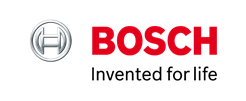
THE BOSCH GROUP is a leading global supplier of technology and services. It employs roughly 402,000 associates worldwide (as of December 31, 2017). The company generated sales of 78.1 billion euros in 2017. Its operations are divided into four business sectors: Mobility Solutions, Industrial Technology, Consumer Goods, and Energy and Building Technology. As a leading IoT company, Bosch offers innovative solutions for smart homes, smart cities, connected mobility, and connected manufacturing. It uses its expertise in sensor technology, software, and services, as well as its own IoT cloud, to offer its customers connected, cross-domain solutions from a single source. The Bosch Group’s strategic objective is to create solutions for a connected life.
The Mobility Solutions business sector, one of the world’s largest automotive suppliers, accounts for 61 percent of total Bosch Group sales. Its main areas of activity are injection technology and powertrain peripherals for internal-combustion engines, diverse solutions for powertrain electrification, steering systems, safety and driver-assistance systems, technology for user-friendly infotainment as well as vehicle-to-vehicle and vehicle-to-infrastructure communication, repair-shop concepts, and technology and services for the automotive aftermarket. Some of the main operating business areas within the Automotive Technology business sector are active and passive vehicle safety systems, driver-assistance and other guidance functions up to automated driving, in-car information and communication systems.
Bosch is and was involved in several European initiatives concerning safety and automated driving, e.g. ASSESS, PROS, iHeERO, AdaptIVe, HIGHTS, PROSPECT, SCOUT as well as German publicly funded projects on automated driving like PEGASUS, Ko-HAF or MEC-View. In the context of human body modelling Bosch was involved in the consortium Occupant Modelling for Integrated Safety (OM4IS) from 2009-2012 aiming at the development of active human models and relevant controller schemes. The participation in the 7th EU framework program project SafeEV from 2012 – 2015 enlarged this focus on a virtual tool chain for benefit assessment of occupants and pedestrians via an active human body model. Furthermore, Bosch is a member of ERTRAC, CLEPA, iMobility Forum.
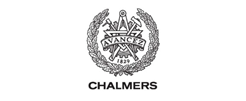
Chalmers tekniska hoegskola (Chalmers University of Technology) was founded in 1829 following a donation by William Chalmers, director of the Swedish East India Company, and was transformed into an independent foundation in 1994.
Chalmers has developed leading research in the areas of life sciences, materials science, information technology, micro-and nanotechnology, environmental sciences and energy.
Chalmers‘ annual turnover is 3611 million SEK (appr. 380 million EUR), out of which 70 % is related to research. Around 60 % of the research funding is acquired in competition from external sources. Some 13 000 people, including 3253 employees (3076 FTEs), work and study in Chalmers’ 17 departments.
The university offers PhD and Licentiate programmes as well as MScEng, MArch, BEng and nautical programmes. There are 9435 students (FTE) in programmes leading to 1 200 Master’s degrees annually. 1 137 students are involved in doctoral programs leading to about 350 PhD and Licentiate of Technology degrees each year.
Chalmers has been involved in EU funded research projects since 1989 and is on a continuous basis involved in approximately 160 projects within different EU programmes, mainly the Framework Programmes. The annual EU funding (2016) for research is 23 M€.
The Chalmers parts within FP7 have a contract value of 121 M€. Chalmers is the beneficiary in 270 projects in FP7, and the coordinator or single beneficiary of 52 of these contracts. Out of these contracts, Chalmers is the host for 17 ERC grants. As for Marie Skłodowska Curie Actions, Chalmers is the beneficiary in 31 MCA projects in FP7: 13 ITNs (coordinator for 2); 3 Intra-European Fellowships; 10 Career Integration Grants; 3 IRSES; 2 IAPPs.
In Horizon 2020 Chalmers is participating in 93 projects with a contract value of 52 M€, whereof 5 ERC grants, 21 MSCA grants (10 ITNs) and 22 projects in the Transport challenge. Chalmers has participated in more than 700 Framework Programme projects and is the coordinator of 20 Horizon 2020 projects including the Graphene Flagship.

Mercedes-Benz AG is responsible for the global business of Mercedes-Benz Cars and Mercedes-Benz Vans with 175,000 employees worldwide. Ola Källenius is Chairman of the Board of Management of Mercedes-Benz AG. The company focuses on the development, production and sales of passenger cars, vans and services. Furthermore, the company aspires to be leading in the fields of connectivity, autonomous driving and alternative drives with its forward-looking innovations. The product portfolio comprises the Mercedes-Benz brand with the sub-brands Mercedes-AMG, Mercedes-Maybach and Mercedes me – as well as the smart brand, and the EQ product and technology brand for electric mobility.
Mercedes-Benz AG is one of the largest manufacturers of premium passenger cars. In 2018, it sold more than 2.3 million cars and over 420,000 vans. In its two business divisions, Mercedes-Benz AG is continually expanding its worldwide production network with over 40 production sites on four continents, while aligning itself to meet the requirements of electric mobility. At the same time, the company is developing its global battery production network on three continents. Sustainable actions play a decisive role in both business divisions.
To the company, sustainability means creating value for all stakeholders on a lasting basis: customers, employees, investors, business partners and the society as a whole. The basis for this is the sustainable business strategy of Daimler in which the company takes responsibility for the economic, ecological and social effects of its business activities and looks at the entire value chain.

ESI Group is a world leading innovator in Virtual Prototyping software and services. Specialist in material physics, ESI has developed a unique proficiency in helping industrial manufacturers replace physical prototypes by virtually replicating the fabrication, assembly and testing of products in different environments. ESI solutions help world-leading OEM’s and innovative companies in making sure that their products will pass certification tests – before any physical prototype is built. More recently ESI Group has invested heavily in acquiring a few companies and new technologies to enhance its portfolio and to support the industry Digital Transformation and offerings solution covering the entire Product Performance Lifecycle (PPL) based on the Hybrid Digital Twin. The company employs about 1200 high-level specialists worldwide to address the needs of customers in more than 40 countries.
Since performing the first ever virtual car crash in 1986, ESI has established itself as leading provider of software solutions to test product safety virtually. The company has a unique expertise in human modelling for crash and safety applications, with an extensive portfolio of human-models used by the automotive industry to replace real tests – or even real prototypes- up to pre-certification.
ESI brings to the OSCCAR project a wealth of experience with the Total Human Model for Safety (THUMS), which will be used to create an advanced FE human body model (HBM). THHUMS are a family of Finite Element (FE) models, developed by Toyota for both for pedestrian and occupant applications, which ESI made compatible with its safety and product performance software, Virtual Performance Solution (VPS).
ESI also brings experience in modelling active human behavior: its active muscle material model in VPS, based on the Hill-type model, applies to automotive car crash scenarios as well as ergonomics applications.
Finally, ESI has fostered an unrivalled capacity to couple different software solutions. In particular, this solution can be adapted to couple VPS with ESI’s multi-physics system simulation, SimulationX, allowing manufacturers to analyse complex dynamic systems. This will allow to take into account occupant reaction in pre-crash phase.

Applus IDIADA is a global partner to the automotive industry, supporting its clients in product development activities by providing design, engineering, testing and homologation services. The company has more than 2.450 professionals and an international network of subsidiaries and branch offices in 25 countries which ensures that our clients get customized, added-value solutions.
As a result of continuous development and expansion, IDIADA is now ranked in 16th position in the ranking of the top 25 engineering companies around the world published by the German Automobilwoche magazine. The company has been climbing since it was first listed in 2008 and aims to be in the top 10 within the next 5 years.
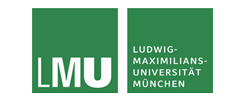
MU is the leading teaching and research university in Germany, ranking 1st in Germany in the latest Times Higher Education World University Ranking. With the neighbouring Max-Planck, Helmholtz, and Technical University institutions, it can be regarded as a major European science hub. LMU is a large beneficiary of the German excellence initiative, and has hosted more than 70 ERC grants. In total, under the Seventh EU Framework Programme the LMU was recipient of 225 projects, in 22 of which it is/was the coordinating institution. In the first calls in Horizon2020 the LMU received more than 100 grants, 17 of them in the Societal Challenge 1.
Within the Institute for Legal Medicine, the Biomechanics and Accident Analysis Group has built research activities focusing on accident and trauma analysis as well as injury mechanics. The primary field of application is the safety of road users, but this is extending to all neighbouring scenarios such as falls and violence. 11 scientists from Mechanical Engineering, Medicine, Physics, Ergonomics and Biology contribute to human body modelling for crash simulation, volunteer testing, anthropometric analysis, the reconstruction of accidents, and the development of safety measures.
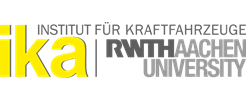
The Institute for Automotive Engineering (IKA) of RWTH Aachen University and is active in the field of applied automotive research. RWTH Aachen University is recognised as one of the leading universities worldwide in vehicle technology and has been part of various EU projects. The activities executed by IKA range from the idea up to experimental testing of prototypes and production vehicles. IKA’s staff consists of approximately 90 scientific and 60 non-scientific employees supported by about 200 student assistants. IKA is a non-profit research organisation of the pubic body in the field of secondary and higher education establishment.
Corresponding to its main areas of work, IKA comprises ten departments: body, vehicle concepts, chassis, drivetrain, acoustics, electric/electronics, driver assistance systems, thermal management, driver experience and strategy & consulting. This wide range of competencies enables analysing and optimising the vehicle as a whole paying attention to the complex interactions between its individual subsystems. Powerful computer resources, current commercial simulation software, various workshops and numerous testing facilities support IKA’s activities. In addition to the drivetrain, battery, chassis and tire test benches it also acoustic, thermal, servo hydraulic and various crash facilities for component, car-to-car, car-to-barrier as well as VRU testing are available. Furthermore, it is enriched by a highly dynamic driving simulator, test tracks as well as latest measurement technology and up-to-date Car2X communication devices.
fka mbH Aachen (FKA) is involved as a third party within the project. FKA was founded in 1981 as a spin-off from IKA. FKA´s activities are dived into ten departments, which correspond to the IKA structure. Together with IKA, FKA has access to a total staff of approx. 470 employees. As a partner in the automotive industry, specialised and interdisciplinary solutions as well as advice are provided by the technical divisions of FKA. Starting with the whole vehicle, fka develops concepts relating to the key themes of energy efficiency, safety and driving pleasure. The focuses with regard to safety are driver assistance, crash-optimised structural design, protection of vulnerable road users as well as active chassis and driving dynamics control systems.

Siemens Industry Software NV (SISW) is a Belgian software and engineering company based in Leuven, Belgium, which is part of the Siemens PLM (Product Lifecycle Management) Software division. Originating as LMS International, one of the oldest and the largest spin-offs of the KU Leuven university, it was acquired in 2013 by Siemens to enable the development of a truly end-to-end closed loop. Within Siemens PLM, SISW represents the Simulation and Test Solutions Business Segment of Siemens PLM Software. Its test and simulation solutions help manufacturing companies manage the complexities of tomorrow’s product development by incorporating model-based mechatronic simulation and advanced testing solutions in the product development process.
The SISW products and services tune into mission-critical engineering attributes – ranging from system dynamics, structural integrity and sound quality to durability, safety and power consumption. This included the Simcenter software which has best-in-class structural and system simulation capabilities and is used by many automotive OEMs to build high-fidelity vehicle dynamics models to analyse comfort, handling, durability, performance,… The simulation models can combine detailed suspension models with powertrain models and driver assistance systems. These models has also been integrated with third-party environment, traffic simulation and sensor models to evaluate autonomous driving scenarios. Furthermore dedicated solvers are available that can solve the same type of models in real-time for hardware-in-the-loop and human-in-the-loop testing.
SISW is a partner of choice of more than 5,000 manufacturing companies worldwide and its R&D operations in Leuven have 35 years of solid engineering experience with an unrivalled track record in developing and marketing technology breakthroughs that address very real customer challenges. Key facilities include an appropriate software & IT framework for simulation, testing and correlation expertise, and in-house facilities and expertise for structural, vibro-acoustic and durability testing of industrial structures.
To continuously foster the innovation of its products and services, the R&D operations are very active to develop new methodologies and solutions, often in collaboration with leading research institutes within the framework of international research projects such as the EC Research Framework programmes, EUREKA/ITEA2 or the Flemish government research programmes. At any time, around 20 major multi-partner research projects are ongoing at SISW.

TASS supports the global automotive industry in the creation of safer and smarter vehicles and is known for its unique development methodology, offering a set of advanced simulation software tools, tailor made engineering solutions and state-of-the-art testing and certification facilities and services, with the aim to improve Integrated Safety systems of vehicles and boost the development of Highly Automated- and Connected Driving. These value-added software and services improve the competitive edge of its customers in terms of better products, increased speed-to-market and more robust and cost-effective development processes.
TASS finds its origin in the Dutch research organisation TNO and has built a reputation as a leading organisation in the transportation industry. It has a rich history of more than 25 years, employing 200 people in 11 countries, supporting the industry through local offices worldwide. Headquartered in Helmond in The Netherlands it operates several laboratories, under which a purpose-built, first-of-its-kind facility for testing and validation of Intelligent Transportation Systems and Cooperative Driving technologies. Its software brands PreScanTM, Delft-TyreTM and MADYMOTM are familiar names to the OEMs and to suppliers in the automotive industry.

Toyota Motor Europe NV/SA (TME) oversees the wholesale sales and marketing of Toyota and Lexus vehicles, parts and accessories, and Toyota’s European manufacturing and engineering operations. Toyota directly and indirectly employs around 94,000 people in Europe and has invested over EUR 8 billion since 1990. Toyota’s operations in Europe are supported by a network of 30 National Marketing and Sales Companies across 56 countries, a total of around 3,000 sales outlets, and nine manufacturing plants. In 2013, Toyota sold 847,540 Toyota and Lexus vehicles in Europe.
TME R&D has been regularly involved in EC research. In OSCCAR, TME’s contribution will be undertaken by the Safety Research & Technical Affairs Department which is in charge of EU and collaborative research and technical communication with third parties on vehicle safety matter.

Graz University of Technology pursues teaching and research in the fields of engineering sciences and the technical-natural sciences. The Vehicle Safety Institute (VSI) focuses on research and development in the field of transportation safety. Particularly emphasis is given on the research areas of „Accident Research“, „Integrated Safety“, „Safety aspects of Self-Driving Cars“, „Safety Aspects of Alternative Fuel Vehicles“ and „Impact Biomechanics“. Numerical simulations and experiments are used to investigate mainly multi-physical problems.
Research questions are answered by means of numerical (mostly explicit) simulation methods (e.g. human body models ,…) as well as through experiments (e.g. crash tests, complete vehicle testing on test tracks, volunteer tests,…)
The Vehicle Safety Institute runs its own, in-depth accident database CEDATU. Innovative methods are used to incorporate this data with other circumstances, such as traffic density, to model a scenario cloud to deduce relevant critical scenarios. VSI also aims at method development for determining the effectiveness of integrated vehicle safety systems (e.g. X-RATE).
Analysis of integrated safety strategies is undertaken for accident prevention as well as for the reduction of accident severity, taking into account influential factors involving people, vehicle and environment. The institute is developing accident prevention strategies (e.g. AEB, C2X communication) and accident mitigation strategies (e.g. development of innovative restraint systems for self-driving cars, protection of vulnerable road users, child safety, structure safety). Integrated safety strategies unite both accident prevention and mitigation to create one integrated strategy (e.g. activating restraint systems in the pre-collision phase).
The research focus of biomechanics is centred on the analysis of people under the influence of high dynamic stress. This makes it possible to analyse injury mechanisms and deduce injury criteria. In order to evaluate and optimise safety strategies the analysis of injury risk must be as accurate as possible and kinematic behaviour must be as biofidelic as possible (pre and in-crash). Validation is done with real world accidents and experiments. Furthermore, the institute focuses on biomechanical testing with volunteers – test have been performed in the past on sleds and in full vehicles to investigate the influence of muscle activity in pre-crash phase.
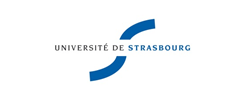
The Biomechanics Team involved in OSCCAR is a research team of ICUBE (Ingenieurie, Imagerie, Informatic) a key lab of Strasbourg University covering all Engineering, Image processing and Computation Science. This Laboratory is also associated to CNRS the Centre National de la Recherche Scientifique. Our team is constituted by a pluri-disciplinary management group of 15 researchers including PhD students. The group comprises specialists in mechanics and in legal medicine. The general research area is the characterisation and modelling of the human head-neck system under physiological and extreme acceleration, including impacts and the coupling of human body models with protective systems. Most of the aspects related to head-neck protection assessment are addressed, i.e. modelling, injury mechanism and tolerance limits investigation. Several generations of human head-neck finite element models have been proposed by our team. New head tolerance limits have also been defined, published and presented at ISO meetings as well as EuroNcap meetings. Our group has all experimental and computing facilities needed for dynamic analysis of mechanical structures. In addition to the head-neck system our topics were opened to the liver organ in close collaboration with IRCAD, an important lab located in Strasbourg and working in the domain of liver cancer and which has the relevant facilities for animal testing. As a whole our Biomechanics Lab intends to develop Human Body Models dedicated to the assessment of injury risks to be transferred to end users in the industrial domain. The main result obtained or the model based brain injury criteria in terms of axon strain and the transfer to industry of the SUFEHM (Strasbourg University FE Head Model). This head model has been coupled to an advanced neck model and further coupled to THUMS in the context of the EU project Safe-EV.

The University of Stuttgart is one of the leading technically oriented universities in Germany with global significance founded in 1829. It sees itself as a centre of university-based, non-university and industrial research. The primary vector of its action is an interdisciplinary integration of engineering, natural sciences, humanities, and social sciences based on the fundamentals of cutting-edge research at a disciplinary level. It is organised into ten faculties, and two of them will take part in the OSCCAR project: The Biomechanics and Biorobotics group (2bio) from the Institute of Sport and Exercise Science and the High Performance Computing Centre (Höchstleistungsrechenzentrum Stuttgart, HLRS).
The Biomechanics and Biorobotics group research work can be divided into three main domains: simulations using numerical human body models, determination of structure and function of biological systems and development of methods with the focus on mechanics and control of human movements. During the implementation of previous projects, 2bio group utilised forward dynamics simulation approach for human body models motion modelling within multi-body in-house code demoa and finite element code LS-DYNA. New motor control concept for human body model simulations based on the equilibrium-point control theory was proposed, new methods for movement control effort determination and consideration of muscles wobbling masses were suggested. For determination of the muscle tissues properties several successful experimental studies on mammalian muscle tissues were carried out.
The High Performance Computing Centre Stuttgart is one of the three national supercomputing centres in Germany and one of the three members of the GAUSS Centre for Supercomputing, offering services to users from academia and industry. The world leading experience of HLRS in supporting users from the engineering domain at large in parallel programming (for example inside the Teraflop Workbench), in the development of productivity tools for parallel programming including integrated development environments, in the expertise in applying software engineering methods to the HPC domain, in cloud computing and immersive visualization projects. Among others, the HLRS has co-founded the Automotive Solution Centre Stuttgart (ASCS) through which it is in constant contact with OEMs and ISVs in the automotive field.

Volvo Cars is a human-centric luxury car brand with around 30 000 employees and retailers in over 100 countries. Volvo Cars has a long tradition of leadership in traffic safety innovation and performance, and has successfully participated in numerous EU funded traffic safety research programs, including e.g. euroFOT, AdaptiVe, HUMOS and ADSEAT. Volvo Cars’ head office is placed in Göteborg Sweden, where also the main part of the Research and Development, including the Volvo Cars Safety Centre, is positioned.
Pioneering in the 1950’s with the introduction of the three point safety belt, Volvo Cars Safety Centre has been the core of development and evaluation of Volvo safety innovations ever since; exemplified by e.g. side impact protection technologies, whiplash protection systems, child safety developments and auto brake technologies. Volvo Cars Safety Centre has state-of-the-art crash test facilities with capabilities to run any full scale real world crash configuration (including indoor car-to-car crashes), advanced crash test sleds and CAE capabilities. Through in-house real world data collection, continuously since 1970, Volvo Cars bases safety developments on real world customer needs.
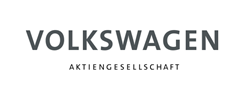
The Volkswagen Group, with its headquarters in Wolfsburg, Germany is one of the world’s leading automobile manufacturers and the largest carmaker in Europe. The VW Group comprises twelve brands from seven European countries: Volkswagen Passenger Cars, Audi, SEAT, SKODA, Bentley, Bugatti, Lamborghini, Porsche, Ducati, Volkswagen Commercial Vehicles, Scania and MAN. Each brand has its own character and operates as an independent entity on the market. The product spectrum ranges from motorcycles to small cars and luxury vehicles. In the commercial vehicle sector, the products include ranges from pick-ups, buses and heavy trucks. The Group operates 120 production plants in 20 European countries and a further 11 countries in the Americas, Asia and Africa. Every weekday, 626,715 employees worldwide produce around 43,000 vehicles, and work in vehicle-related services or other fields of business. The Volkswagen Group sells its vehicles in 153 countries. Under difficult market conditions, the number of Group vehicles delivered to customers rose to 10.297 million in 2016. Group sales revenue in 2016 totaled €217 billion, while earnings after tax amounted to €5.4 billion. Expenditures for R&D came up to approx. 11.5 billion euros. The approx. 48.000 employees within R&D account for about 8% of the total workforce.
It is the goal of Volkswagen to offer vehicles with continuously increased quality, safety and improved technological standards while reducing fuel consumption and emissions at the same time. Therefore, the ideas contributed by our employees and the expertise of external partners play a key role. Volkswagen is interested in the application of new developments such as electric and autonomous vehicles in all automotive areas not only to meet all relevant technical and legal requirements but also to satisfy customer demands on a consistently high level. Volkswagen also has experience in the coordination of and participation in national and EC funded projects and networks involving European car manufacturers, suppliers, research organizations and universities. Some of these projects are listed subsequently. VW has extensive expertise in vehicle design and manufacturing and increasingly strong experience in hybrids, fully electric vehicles and recently with autonomous vehicle concepts as well. Finally, since 2012, VW has been steadily developing technical expertise in the area of finite element human body modelling used for the evaluation of new integrated vehicle safety systems and injury risk assessment. This is especially important for new core competencies currently being developed such as autonomous driving vehicles.

ZF is a global leader in driveline and chassis technology as well as active and passive safety technology. The company has a global workforce of around 137,000 with approximately 230 locations in some 40 countries. ZF allows vehicles to see, think and act. With its technologies, the company is striving for Vision Zero – a world of mobility without accidents and emissions. With its broad portfolio, ZF is advancing mobility and services in the automobile, truck and industrial technology sectors. The company is leveraging its current strengths to be ideally positioned for the future. Contributing factors include the company’s strong organic growth and its acquisition of TRW Automotive in 2015 is equally important.
Former TRW was added as division “Active & Passive Safety Technology” and has substantially expanded ZF’s product portfolio by adding safety and sensor technology products and expertise – decisive factors for automated and autonomous driving.
The business unit Occupant Safety Systems (OSS) is developing and industrializing occupant restraint systems, namely seatbelt systems, steering wheel systems, airbag systems as well as inflator systems for all global automotive markets. With more than 2.300 R&D employees worldwide, OSS is at the forefront of occupant safety system development and validation, also continuously pushing the capabilities of physical and virtual tools and methodologies. This also includes intensive investigations in the fields of integrated safety for autonomous driving as well as human body models for advanced occupant safety assessments.
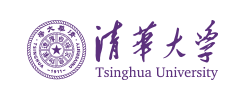
Tsinghua University is a research university located in Beijing and a member of the C9 League of Chinese universities. Tsinghua is ranked as one of the top academic institutions in China and Asia, and has been ranked as the best engineering school in the world, ranking 1st among 250 universities in the Best Global Universities for Engineering list. Tsinghua University is dedicated to academic excellence, the well-being of Chinese society, and global development and has collaborated with many world leading universities, research institutes, and multinational enterprises. Contribution factors include the university’s strength in producing research in automotive safety within the the Department of Automotive Engineering at Tsinghua University.
The Department of Automotive Engineering was formally established in 1980 with a view to promoting the development of China’s automotive industry. It undertakes scientific research centering on safety, energy conservation and environmental protection, promoting scientific and technological advancement, and actively carrying out domestic and international academic exchange and cooperation. The research group in automotive safety in the department owns the first vehicle crash lab ever built in China and is the Host of Vehicle Safety Technology Committee of the Chinese Society of Automotive Engineers. The group is at the frontier of vehicle safety and injury biomechanics, performing research projects in injury mechanism of human bodies under impact, occupant safety and adaptive restraint system, protection of vulnerable road users, as well as development of crash dummy models.
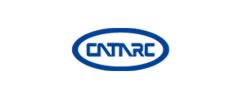
China Automotive Technology & Research Centre (CATARC) is a science research institute established in 1985 to meet China’s need of managing the automotive industry and now belongs to SASAC (State-owned Assets Supervision and Administration Commission of the State Council). It owns total assets RMB 7.14 billion including net assets RMB 4.68 billion and covers an area of about 5 km2. Meanwhile it has built the talent pyramid based on chief expert, reserved subject leader and young science and technology cadre, which is a human resources team with high educational background and proficiency in skill and management.
CATARC is the centralized technical organization of the auto industry and the technical supporting body to the relevant national government departments. With the independent and neutral role, it firmly takes the development road of “guided by science and technology, focusing on service to the industry and supported by commercialization”.
CATARC’s businesses contain standardization and technical regulation, auto manufacturer and product catalogue management, auto testing, C-NCAP, C-ECAP, proving ground and vehicle forensic authentication, and auto safety technology research.
CATARC has the largest and most professional traffic accident research team in China, with several research bases in different cities. It has extensive cooperation and communication with famous research institute like BASt (German Federal Highway Research Institute), ITARDA (Japan Institute for Traffic Accident Research and Data Analysis) and SAFER (Vehicle and Traffic Safety Centre at Chalmers), and comprehensive joint study projects with auto companies and universities.
